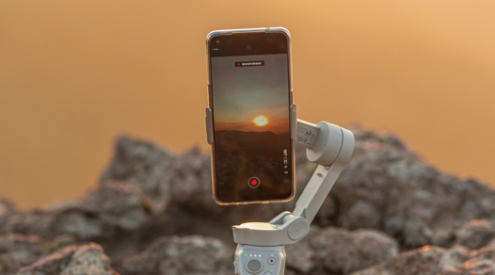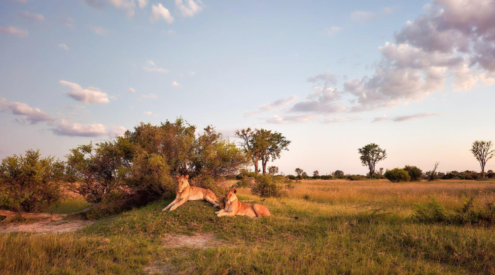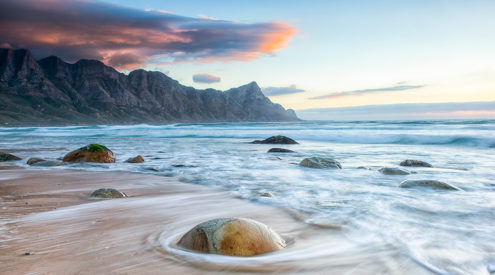We all love travel and if you are reading this you love photography as well. I am always so inspired in new lands by everything around me, I am truly like a kid in a sweet shop, camera in hand, hungry to capture anything that looks remotely interesting or foreign. But to be a successful travel photographer and return with an inspiring story that will proudly illustrate a well-written editorial piece, you have to have more then talent.
What you need to be a travel photographer
There is no doubt you have to be passionate, curious and a good observer of the world. You have to desire capturing the essence of your destination and its culture into powerful images. Singularly isolating moments that will give someone far away a glimpse into the workings of the place you are visiting. My mind is in over drive on these assignments as one can never tell where and when the next opportunity sits. So a deep love to capture the essence of your surroundings is a definite precursor to a successful travel story. It is not enough to take a picture of the Eiffel Tower, we have all seen that a million times! You have to surround it with context, mystery and romance using light, angles and composition to tell a new story that is fresh and thought provoking.
Portraits
Unless you shoot very remote natural environments or prefer documentary style, you should on some level like people and interact with them. You need to connect with the people around you to bring out the emotion and magic.
Be a jack of all trades
Travel stories require you to be good at a lot of disciplines: portraiture, landscape, street and architectural photography, food and interiors. If you are a photographer like me that loves to shoot it all and find your studio day job limits you to a certain genres of photography, then this is where you can flex all your picture-taking muscles.
Who buys travel photographs?
The typical travel assignments that I personally encounter are either commissioned jobs accompanied by the writer or where I pitch an idea before hand with out obligation, and will then try and sell the story on my return. In the latter case I typically take a combined holiday and schlep my wife with me to every corner of the city in order to get the story.
Editorial (magazines, books and newspapers), advertising or stock photography are the common outlets for travel assignments. A game lodge or hotel may need a bank of images for their marketing material for example.
What’s being a travel photographer like?
The reality of travel photography is that it is not very easy to make a good or consistent income out of it and as glamorous as it sounds, it is hard. In and out of airports, jet lag, away from family and friends often for long periods of time and living in hotels out of suitcases or moving between towns and cities. The places you visit may be unsafe or language barriers may make it difficult to communicate. Unless it’s one of those all-expenses-paid-for trips, it does become a matter of keeping costs down and with limited days in one place, the added pressure to get the shots quickly and efficiently. And you are doing this with the intention to sell which means you have to see it as a business as well. You need to document well where you have been and what you have taken images of. On your return one has to market the images to prospective clients, work on your portfolio and show this to the right people, convincing them that you are right for their next assignment.
Having said all that, and even though it constitutes about 3% of the work I do a year, it is probably up there as the most rewarding. And that is what travel photography is really all about, expressing your passion!
Be prepared
In order to set up a travel shoot you need to be well prepared. The better prepared one is for your assignment the more space there will be to create the spontaneity and unrehearsed moments that make up memorable images. We all have our own inherent style of seeing the world but within that you need to go into the shoot with an understanding of your goals. What story am I telling? Is it about the city of Paris in general or is it the brasseries and food of Paris? Is it the markets of each quarter or what Parisians do for recreation? This needs to be thought out before hand so you can do an adequate investigation as to the where, what and how. Preparation also means your approach. Do you want your images to have a documentary reportage style to them or a more polished advertising feel? Is there a brief or is the narrative up to you? Realistic or abstract? This will help ensure that the images you return with and the expectations of your client meet.
Then there are the logistics. The visas and passports. Your equipment and software, itineraries, plane tickets. map books, your bags and weight. Where will you stow your tripod and what will go into the hold (I always take my cameras, laptop and tripod on board and sometimes they will take the tripod from me and give it to me after but know they have looked after it better than if it had gone directly into the hold).
Photography equipment
For travel assignments I carry with me the following:
When I’m shooting film I take my Contax G2 rangefinder with loads of Portra colour film or Fuji. I prefer film over slide as it gives me the latitude to alter exposure back home in the lab if i don’t get it right on the run. I also like to shoot film on travel stories as it forces me to look harder through the lens. I feel digital has made us all a little lazy, machine gunning our way through scenes with the hope that we have the shot! With film you have to make a decision and stick to it and then wait until you return or when it is developed to see your results (ooh I miss that!).
My digital bag consists of my 5D mark 2 with my 24-70, 2.8 for wide with out too much distortion and the zoom for flexibility in different environments. It is a great all purpose sharp lens and not too heavy. I have my fast standard prime 50mm 1.4 and the 85mm 1.2 for portraits and low light conditions where I can still hand hold. And if I need to go longer I use my 100mm but not that often to be honest. I like to be close to my subject anyway and while I have rented the 200mm for wildlife it is not my thing and they are heavy! Orms is my port of call for good hardware if you in the Cape Town area.
A good unobtrusive travel case for your camera and lenses is crucial! Make space for your memory cards, chargers and spare batteries. I often carry my laptop and external hard drive separately as a precaution in case one gets lost then I have a back up. Take lots of small (4 gig) memory cards instead of fewer larger ones and I can recommend the portable external Lacie rugged as it doesn’t require it own power just the USB connection to the laptop. I always try and keep at least two copies of my digital files at any given time. A smaller day bag for just the camera and lenses you need for that excursion is also a good idea.
So once you have arrived you need to plan your day around the light.
Light and when to shoot
I typically wake up early to catch the first light when everything is bathed in low contrast stunning light. It is a peaceful time of the day but let me add that I get a little jumpy knowing I have a relatively short window period to use that quality of light and feel like I want to be everywhere at once. If I arrive at a new place during the afternoon, I will try and get a lay of the land for the following morning. The other special time for good light is the two hours before sunset when similarly the sun is low in the sky, becomes less harsh and warmer in colour. In fact just after the sun goes down the light is magical and tends to bring out a wonderful ambient light. House and streetlights starts to switch on while there is still enough light in the sky to balance it with. For efficiency, I find that I will shoot inside during the day when the light is too harsh to get good outdoor shots. Here a tripod is recommended if the level of light coming through the windows is too low to get hand held shutter speeds and you want to use natural light. Fast lenses become useful here. Again be careful of high ISOs that can ruin a good shot with digital noise. If it is overcast all the better to take full advantage of the shadowless soft light and colours tend to be rich. The night is usually spent downloading, backing up and doing a quick edit.
Where to shoot
A Google search or preparation before hand can be good but inform yourself about local events, picking up a Time Out magazine or an equivalent can help or speaking to the locals. Sometimes a guide is a good investment if they are not going to take you to all the tourist traps. I have never actually done this but on trips to Botswana, the guides are a wealth of information and a great source of help. Guides can help point out dangerous areas and act as interpreter.
On your return from the assignment
And then on return home the work continues. The final selection of images is made and processed or in the case of film I have jumbo prints made for my selection. I always shoot RAW if it is digital and these should be kept safe somewhere so you can always go back to it for a re-edit or different post production treatment should the story call for it. And always keep the processed image name the same as the original RAW file so it is easy to retrieve down the line. Again when you are pitching and selling your story to an editor, have a plan. Know the angle of the story you wish to pitch and show those images as a set. Sometimes the best images you have may not tell that story and make no sense in the mix.
Intellectual property and your rights
A point to note about intellectual property in this countr, is that if you have been commissioned by a magazine to do an assignment, if they have paid for your transport and accommodation and given you a fee then they essentially own the rights to your images unless otherwise discussed. If you go out and shoot a travel story off your own bat and then sell the images, you sell them as a once off usage and own the rights to the images for further resale. A few years ago I was commissioned to shoot a travel story for Town & Country magazine in the US and was shocked that after three months, with all expenses paid, the images were mine.
One more thing, shooting for a story versus shooting for myself gives me a confidence to do things and ask people to get involved in ways that I wouldn’t normally be able to take advantage of. This extra little bit of purpose heightens my awareness to everything around me perhaps more than had I not had my camera. And yes while on holiday it is good to put the dam thing down and switch off but if you like me shooting is part of my holiday and being paid is just a bonus.
This post was originally published on Russell Smith’s blog http://www.russellsmith.co.za/blog/
For more photo tips and to see Russell’s portfolio go to www.russellsmith.co.za.
Russell Smith gave this talk at the 2011. Getaway Travel Blog Conference. For more on the conference click here.
Here are some of the tweets around Russell’s talk at the Getaway Travel Blog Conference:
BarefootB Next up at #gtbc Russell Smith, ex creative director in ad industry. Tips on imagery for travel blogs.
Foodandthefab Up now, photographer Russell Smith. Love his work, now enter my mind and transfer all your skills! #iwish
butterfingersZA Listening to photographer Russell Smith speak about travel photography #GTBC visual and content goes hand in hand.
nadi_krige Check out Russell Smith’s photography website: bit.ly/sZNxQo #GTBC
nadi_krige “Make sure you’re shooting for love – it will show in your work” Russell Smith #GTBC #Photography
MariettedTH Shoot for the love! It will show in the results, says Russell Smith. So true… #GTBC
CapeTownTourism Russell Smith Photography is just beautiful @GetawayMagazine #GTBC
nadi_krige Shooting a photo into the light could create a magical effect. Not always a bad thing. #Photography #GTBC
DawnJorgensen One of the example pics by our photography presenter Russell Smith at #GTBC is of San Michelle Villa outside Florence, take me back. I?Italy.
skattijay Your camera affects your photography with Russell Smith- so true #GTBC #heartCanon
BarefootB “everybody knows about the magic hours of sunrise and sunset. But I use mid-day for indoor shots” Russell Smith, travel photographer #gtbc
drizzleanddip yes me too! RT @guy_with_camera: Enjoying the great tweets from #GTBC. Wish I could have been there. @getawaymagazine
BarefootB Russell Smith tips for travel photography “The more thorough your research, the better your chances of capturing spontaneity” #gtbc
JaxLahoud ‘In photography, preparation is key- set up spontaneity; know your goals; know your approach for the feel you are creating’ #GTBC
GetawayMagazine RT @CapeTGC: #GTBC ‘Capture the essence of a location’ Russell Smith travel photographer… Ummm time to start practising.
CapeTGC #GTBC ‘Capture the essence of a location’ Russell Smith travel photographer… Ummm time to start practicing.
dancalders Listening and learning from a photographer in the business: be passionate, jack of all trades and hone your varying skills #GTBC
JaxLahoud Russell Smith says: Tell a story with your photo. Like people, engage with them. Be a Jack of all trades, don’t miss opportunities. #GTBC
mike_met Have passion, be curious, tell a story, meet the people. Travel photography tips
@GoTravel24 Russell Smith says: be curious, observe, connect with people, be PASSIONATE about what’s happening around you. #TravelPhotography #GTBC
MariettedTH Often the food and the people of a place tells a better story than the usual props…play with diff genres in photography…#GTBC
GetawayMagazine RT @JaxLahoud: Russell Smith, photographer says it’s all about ‘seeing’. Be passionate,Be curious, Capture the essence #GTBC
CapeTownTourism Russell Smith says Images in your blog needs to tell a story, capture the romance and nostalgia hone those skills @GetawayMagazine #GTBC
JaxLahoud Russell Smith, photographer says it’s all about ‘seeing’. Be passionate,Be curious, Capture the essence #GTBC
GoTravel24 Capture the essence of where you are by seeking out romance, nostalgia and stories to include in your images. #TravelPhotography #GTBC
MzansiGirl RT @nadi_krige: Best tip for travel blog writing: Write short (250 words max) and take great pics. i.e. show don’t tell #GTBC #ttot
MariettedTH Love Russell Smith’s work…Be curious, capture the story through your images, nobody wants to see yet another pic of Eiffel Tower. #GTBC
dancalders #GTBC talking travel photography- now this is my passion!
butterfingersZA “Being passionate about photography is like being a kid in a toy store” – Russell Smith #GTBC
HollyMeadowsSA ‘There’s never been a worse time for publishers, or a better time for writers’ – @justcam on rise of blogging and self branding #GTBC
GetawayMagazine You gotta love and live to take photographs’. – Russell Smith #GTBC
skattijay I’m all about being snap happy when travelling #ignorechirps #GTBC #travelphotography
capetownphoto Interesting Travel blogging tips coming from #GTBC – Have camera, will travel?
MzansiGirl Me too! So glad we can follow it on twitter! RT @guy_with_camera: Enjoying the great tweets from #GTBC. Wish I could have been there.
GetawayMagazine Russell Smith up next at the #GTBC, talking all things photography. Check out some of his images on his blog bit.ly/iV85QK
guy_with_camera Enjoying the great tweets from #GTBC. Wish I could have been there.
jennavanschoor end of the first session at the @GetawayMagazine conference- interesting talks on writing, photography and engaging with audiences #GTBC


















